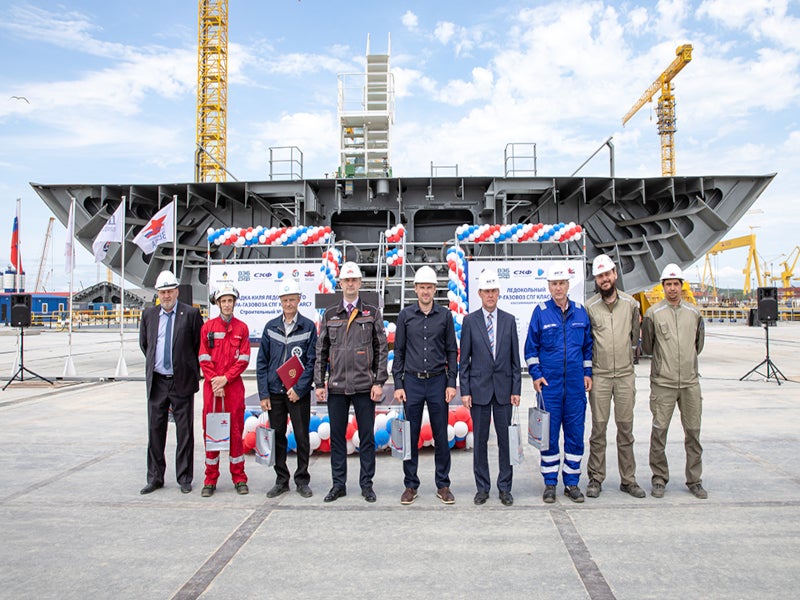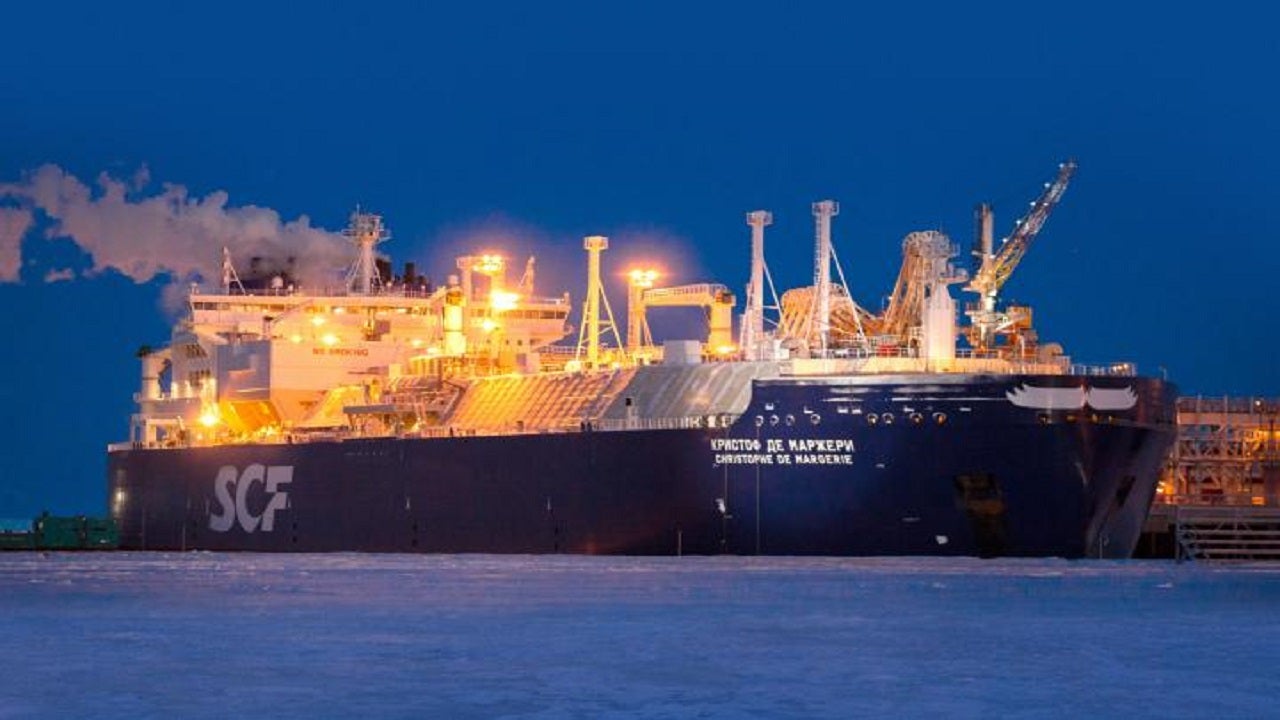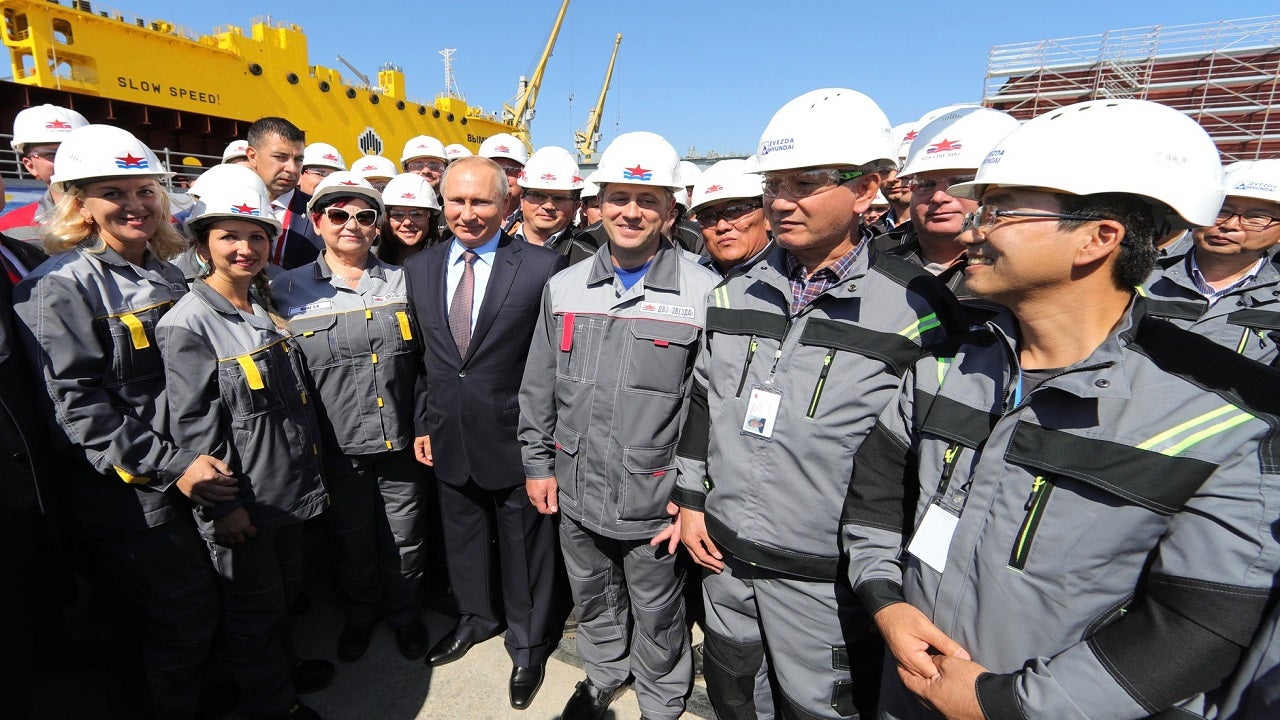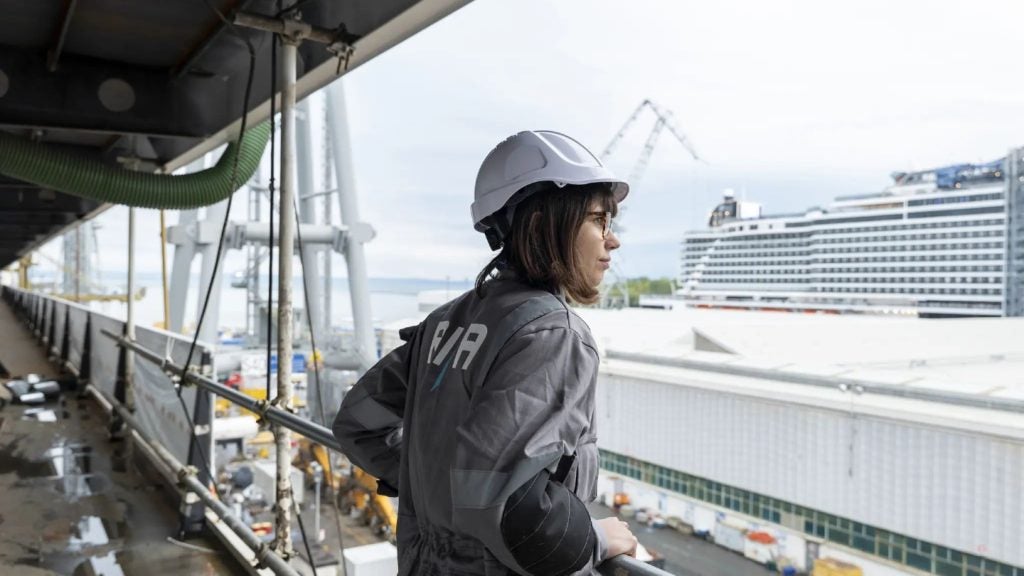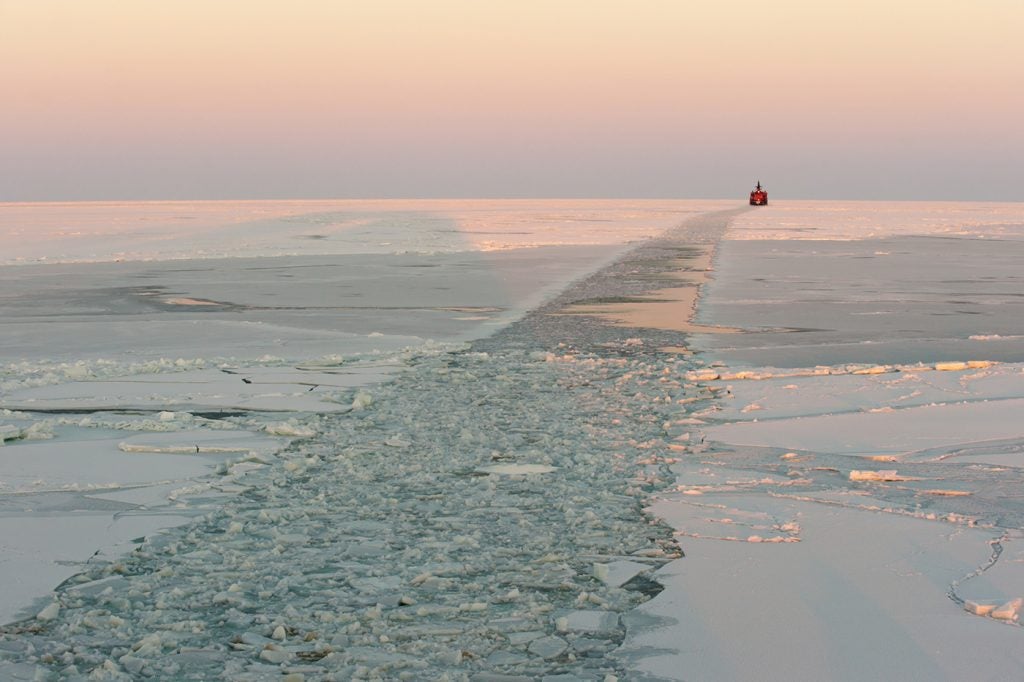Russian shipbuilding company, Zvezda Shipbuilding Complex, is building a series of 15 next-generation Arc7 ice-class liquefied natural gas (LNG) tankers, for PJSC Novatek’s Arctic LNG 2 project in Gydan Peninsula in northern Siberia, Russia.
The Arc7 ice-class LNG tanker fleet will form the core of the Arctic fleet to transport LNG from the Arctic LNG 2 project, and ensure year-round navigation along the Northern Sea Route, including its Eastern section, throughout the year. The vessels will supply LNG to the Asian Pacific region and boost the development of the Russian shipbuilding industry.
The new LNG tankers will have increased icebreaking and manoeuvring characteristics, compared to the existing fleet used by Novatek’s Yamal LNG project. The carriers will be registered under the Russian Federation and operated by a Russian crew.
Scheduled for delivery between 2023 and 2025, the new fleet of 15 Arc7 ice-class tankers will be owned and operated by Smart LNG, which was established as a joint venture (JV) between Novatek and Sovcomflot in September 2019. The vessels will be leased to Sovcomflot, under a long-term contract signed between the two companies.
Orders of new Arc7 ice-class LNG tankers
The partners of Arctic LNG 2, namely Novatek, Total, CNPC, CNOOC, and a consortium of Mitsui and JOGMEC, approved the construction of 15 Arc7 ice-class LNG tankers at Zvezda Shipbuilding Complex, in 2019. Novatek holds a 60% interest in the Arctic LNG 2 project while its partners, Total, CNPC, CNOOC, Mitsui, and the JOGMEC consortium, each hold a 10% interest.
The contracts for construction, chartering, and financing of the lead ship in the class were signed by Sovcomflot in October 2019 while the contracts for four more units were signed by SMART LNG in January 2020. SMART LNG also signed contracts with VEB.RF Group and Zvezda Shipbuilding Complex for the next ten ships in the series, in September 2020.
The funding for the construction of 15 ships will be provided by VEB.RF, which provided the first tranche of $66m for the construction of the lead ship, in December 2019.
The LNG carriers are being built at the Zvezda Shipbuilding Complex, in the Russian Far East. The ships will be delivered to Arctic LNG 2 under long-term charter agreements with Smart LNG and Sovcomflot.
Construction of Arc7 ice-class tanker
The steel cutting ceremony for the lead Arc7 ice-class LNG vessel was held in November 2020, followed by the ceremonies for the second and third ships in the series in January 2021, and April 2021, respectively.
The first steel for the sixth and seventh ships in the series was cut in December 2021 and February 2022, respectively.
The construction of the Arc7 ice-class LNG tanker is significantly challenging, as the construction of Arctic class gas carrier vessels is a technologically complex process in the shipbuilding industry.
The Zvezda Shipyard Complex is the first company to undertake the construction of liquefied gas tankers in Russia.
Zvezda will utilise equipment specific to Russian shipyards and the latest technologies for the construction of Arc7 ice-class tanker. The first part of the Arc7 ice-class tanker under construction was cut in the hull production unit, using a high-tech plasma-cutting machine.
The thrusters for the vessels will be produced at the Sapphire Steerable Thrusters Plant in Bolshoy Kamen, Russia.
Arc7 ice-class tanker details
The design of the Arc7 ice-class tanker will allow the vessel to break through ice up to 2m thick. The tanker will measure 300m long and 48.8m wide, and will have cargo tanks with the capacity to hold 172,600m³ of LNG.
The tanks of the vessels will be equipped with the Mark III membrane containment system, which is adapted to operate in harsh weather conditions.
The vessels will be able to transport LNG in severe weather conditions. Each LNG tanker will be equipped with a 45MW power station.
The tanker will be propelled by three unique steerable thrusters, and will use LNG as the primary fuel to help reduce harmful emissions, ensuring increased environmental safety.
MOL ice-breaking LNG carriers for Arctic LNG 2
In November 2020, Mitsui O S K Lines (MOL), signed charter agreements with Arctic LNG 2 for three ice-breaking LNG carriers. The vessels will be built by Daewoo Shipbuilding and Marine Engineering.
The carriers are 300m long and 47m wide, and will have a storage capacity of 172,500m³. Each vessel will have a maximum ice-breaking capacity of 2.1m level ice, with a hull form more optimised than that of the other carriers employed for the Yamal LNG project.
The ships will be fitted with advanced propulsion to provide improved ice-breaking capabilities when heading forward and aft. The propulsion system will include three Sapfir type azimuth propulsion units with a total capacity of 45MW.
The ice-breaking LNG carriers for MOL will be fitted with electrically-driven deck equipment, semi-enclosed mooring spaces, electrical heat tracing, steam de-icing system, and triple source heating systems among other facilities.
Contractors involved
The propulsion units for the LNG tankers will be supplied by General Electric (GE). French engineering company, Gaztransport & Technigaz (GTT), is responsible for designing tanks for the Arc7 LNG vessels.

